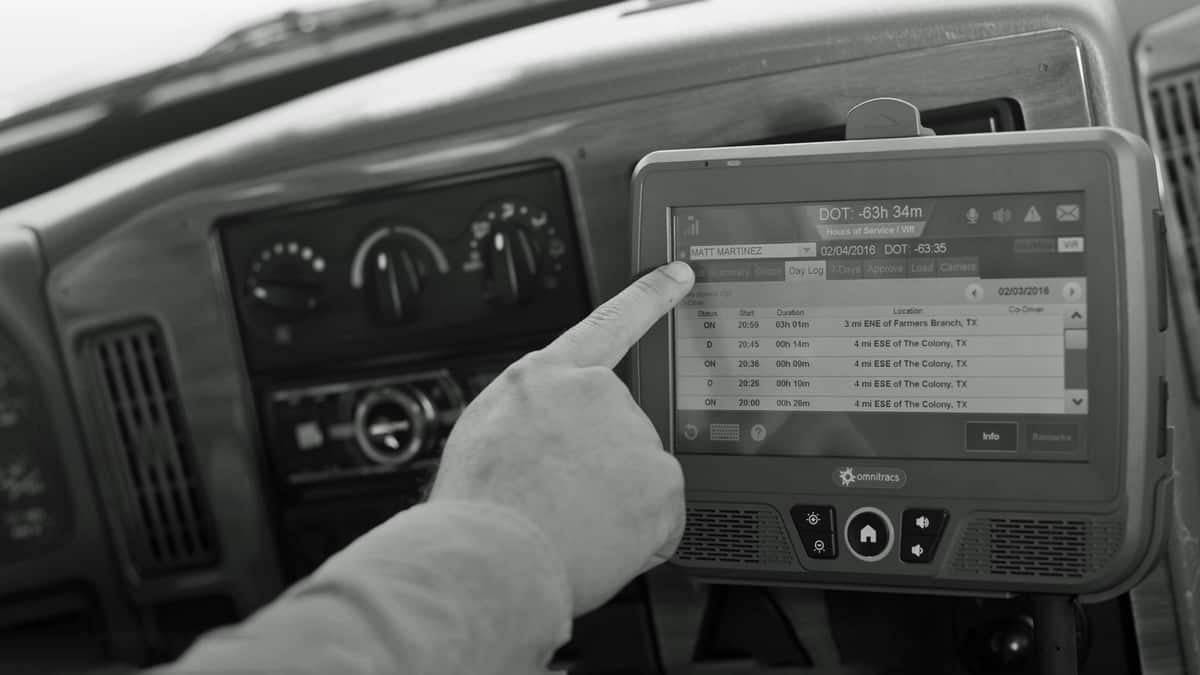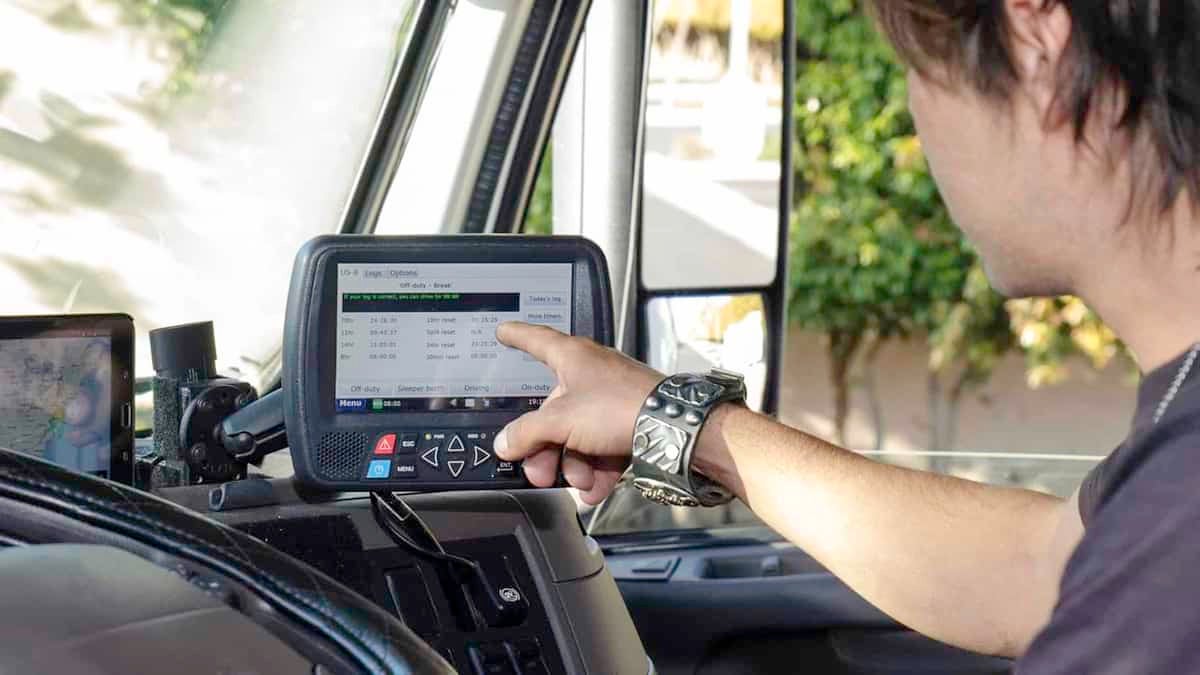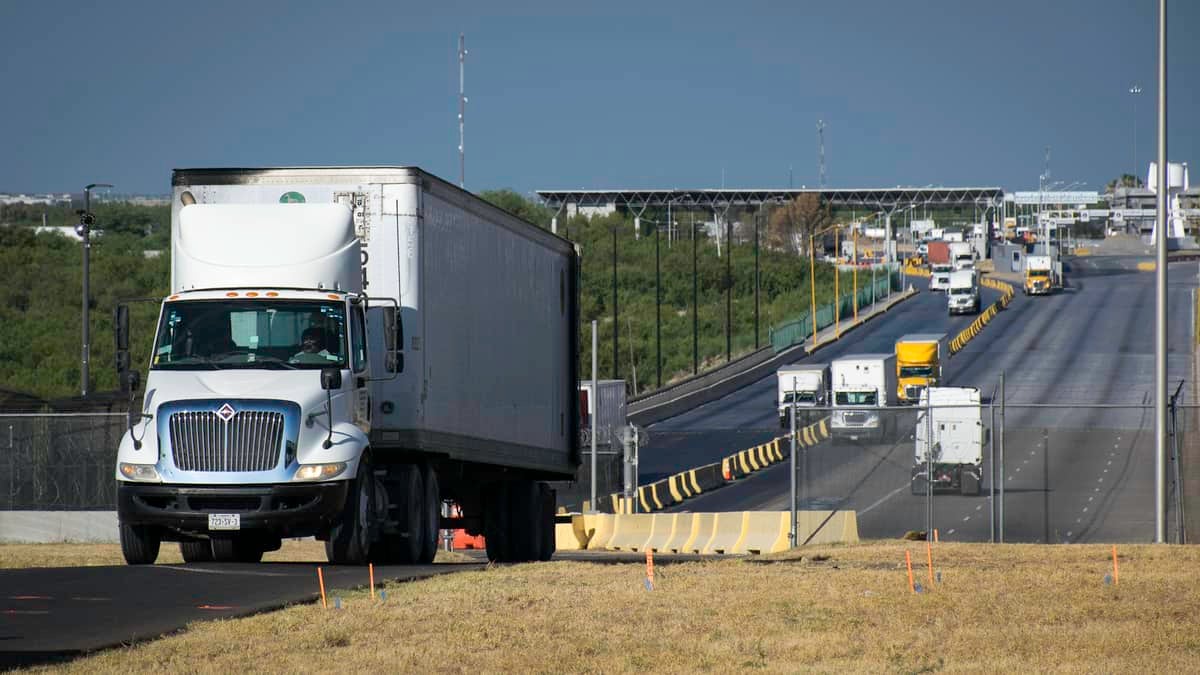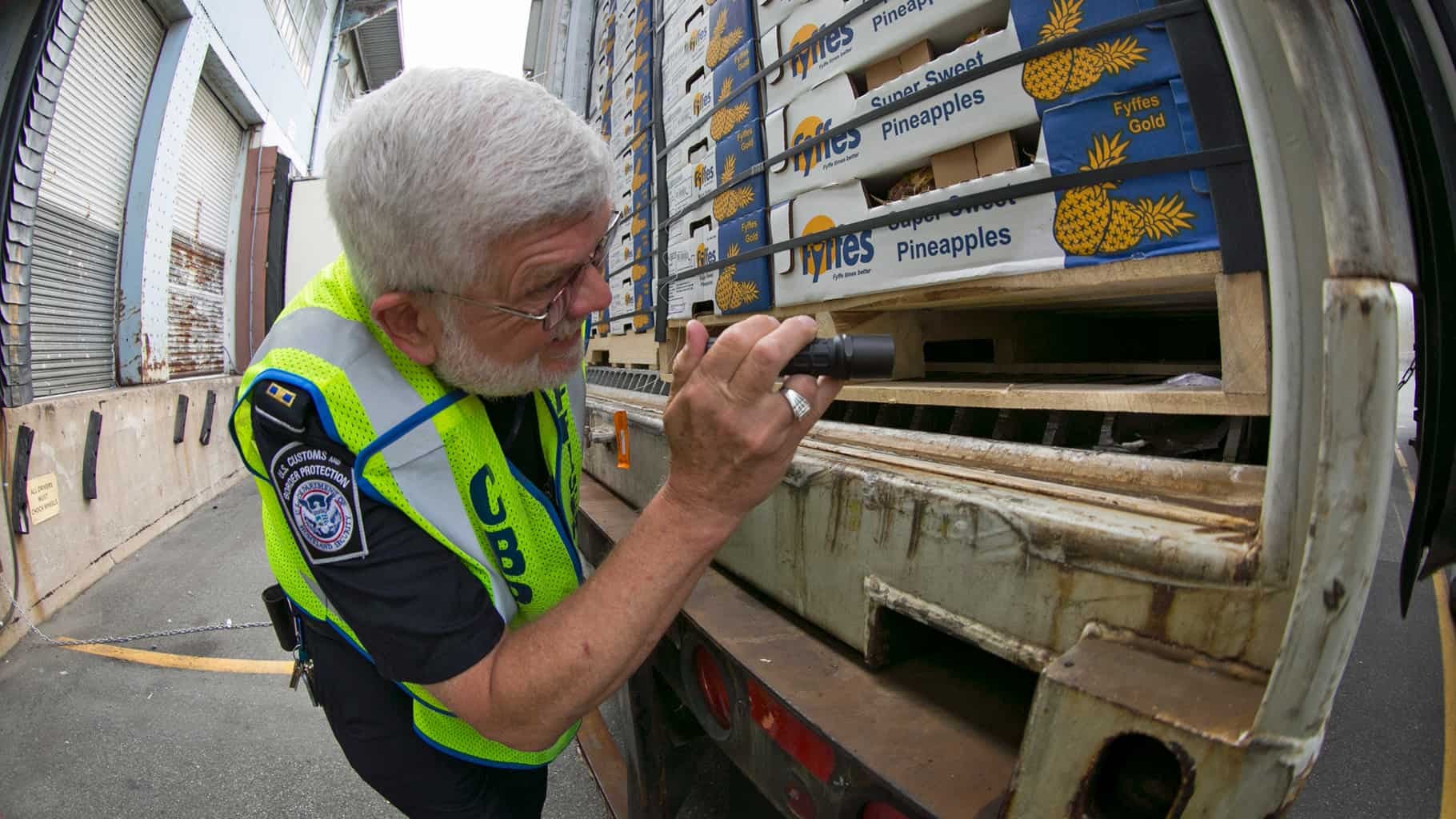There once was a time when a truck driver was in the dark zone of non-connectivity by just being out on the road. Only the range of a CB radio or a nearby payphone could be used to establish contact with dispatchers and freight managers back at the main office.
Times have certainly changed for the better. The trucks used in today’s for-hire trucking industry are computerized offices on wheels, offering drivers and main office personnel real-time connectivity and access to important details such as route position, miles driven, speed and motion, engine status, the driver’s hours-of-service (HOS) status, etc.
Connectivity takes place every step of the way – well, almost. Dark zones do occur depending on the position of the receiving infrastructure like satellites and cell phone towers. What is unfortunate, however, are dark zones resulting from a poorly designed freight transport process.

First, consider electronic logging devices (ELDs). Commercial usage is mandated by the 2012 update to the Commercial Motor Vehicle Safety Enhancement Act, which was a part of a larger funding law known as the Moving Ahead for Progress in the 21st Century Act (MAP-21). The Federal Motor Carrier Safety Administration (FMCSA), as the regulator, will soon require all interstate commercial drivers who fall under federal HOS regulations to use ELDs registered with the agency in order to report their duty-time. Drivers have only three choices: on-duty, off-duty or on-duty but not driving. By December 16, 2019, drivers who are still using the older, less-detailed automatic onboard recording devices (AOBRDs) must switch to approved ELDs. This ends a grace period which started in December 2017 when paper-based log reports were phased out and replaced be either AOBRDs or ELDs. Of course, exceptions will continue for drivers using pre-2000 trucks and those operating eight days or less within a 30-day period. Individual states will have to decide to what degree their intrastate trucking safety regulations will parallel the federal one.
AOBRDs were state-of-the-art in the 1980s and met much of the FMCSA’s expectations for safety back then. But times and rules have changed. ELDs can display a graph-grid showing the driver’s HOS status and, because they are connected to the truck engine’s activity, exactly when the driver goes on or off driving duty. AOBRDs cannot identify unauthorized drivers and mileage. While they can measure speed, they cannot measure vehicle motion. Unlike AOBRDs the ELDs allow the driver to approve any alternations to travel data made by the main office. Basically, ELDs are more accurate, are harder to tamper with, and promote shared compliance between the driver and the main office.

ELDs provide a paperless and automatic tracking system that standardizes the data and transmits it via wi-fi. It avoids the errors that used to occur with manual paper-based log reports such as inaccurate times or misspelled locales. For example, just writing in a city without its state was a violation subject to a fine. ELD data can be used to improve both logistics and safety for drivers and those sharing the roads with them. Trucking companies can use the data to improve supply chain visibility, plan routes and reduce fuel waste. This is pretty good value-for-money since ELDs cost no more than about $1,000 per truck per year.
Like all partnerships within a resilient supply chain, the big-fleet trucking companies and even individual owner-operators need to consider their ELD vendor as a partner in their success. This means choosing a vendor carefully and then developing a good working relationship. Like all information technology (IT), both the software used in the ELD and the support hardware in the truck and at the main office can have glitches from time to time.
Most trucks in the U.S. will maintain connectivity via cell phone towers because of their prevalence. In Alaska, however, satellite communication is necessary along parts of the highways that are outside of cell tower networks. For example, there are a couple of dark zones each lasting about one hour of travel time along the Dalton Highway, which is a 414-mile gravel road proceeding from Fairbanks to Deadhorse near the Prudhoe Bay oil fields. Of course, once the truck is back in a service area the ELD will update the main office with all the data accumulated while it was in the dark zone. The bottom line is that prompt and accurate IT support (e.g., diagnostics, software updates, hardware servicing, etc.) is value-for-money when trying to keep the dark zone at bay.
Now consider cross-border trucking. While inter- and intrastate trucks work to improve their supply chain visibility through technology and relationship-building, border visibility needs work as well. This time the government itself is partly the cause of the dark zone. But part of the blame can also be shared across the trucking industry if border arrival times lead to traffic congestion. In 2018 about 6.3 million truck containers arrived at the U.S. border from Mexico. Just five border crossings (three in Texas and two in California) account for 80% of that traffic. Laredo, Texas is the busiest of these top five border crossings and it alone accounts for about 37% of total northbound Mexico-U.S. truck containers. Traffic congestion remains a problem.
ELDs can track trucks (and, therefore, their freight) on each side of the respective borders shared by the U.S., Canada and Mexico; but things can go dark once the shipment is at the U.S. border and under the control of U.S. Customs and Border Protection (CBP). If the freight is pulled for inspection and moved to a warehouse by a drayage vehicle to wait its turn in the inspection queue there is no way to know exactly when the freight will be cleared for entry into the U.S. and made available for pick-up. This causes problems if the truck intended to deliver the freight into the U.S. has to leave it behind. It is also a problem if the freight was to be interlined with another truck on the U.S. side of the border at a pre-arranged time. And, of course, it is a particular problem if the freight is perishable and runs close to its sell-by date.
These factors make the U.S.-Mexico border an important choke-point to consider since Mexico is the largest source of U.S. food and agricultural imports. This import flow totaled $25 billion in 2017, which is up from only $3 billion in 1994, when Mexico joined the U.S. and Canada in the North American Free Trade Agreement (NAFTA). About half of this total trade flow is comprised of highly perishable fresh fruits and vegetables.

Consignors sign the trucking companies’ bills of lading; and consignees look forward to receiving their goods around the time the sellers tell them they will arrive. These parties trust the cross-border trucking companies to minimize the risk of non-compliance with CBP because of their frequent experience with the agency. Just like ELD vendors need to be treated like good supply chain partners, consignors and trucking companies need to have strong relationships with third-party logistics providers (3PLs) and customs brokers who can navigate through the maze of paper and electronic documents needed to smooth the customs clearance process.

There are also bright spots that CBP itself offers trucking companies. These include applying for expedited border access through its Free and Secure Trade (FAST) program. Furthermore, this past January the U.S. and Mexican governments began a pilot program of joint freight inspections in Texas and are looking to expand the program to border crossings in California and Arizona. FAST-compliant trucks are eligible to take part. These partnerships and programs are other good examples of value-for-money in order to stay out of the dark zone and keep trucks moving both safely and efficiently.







